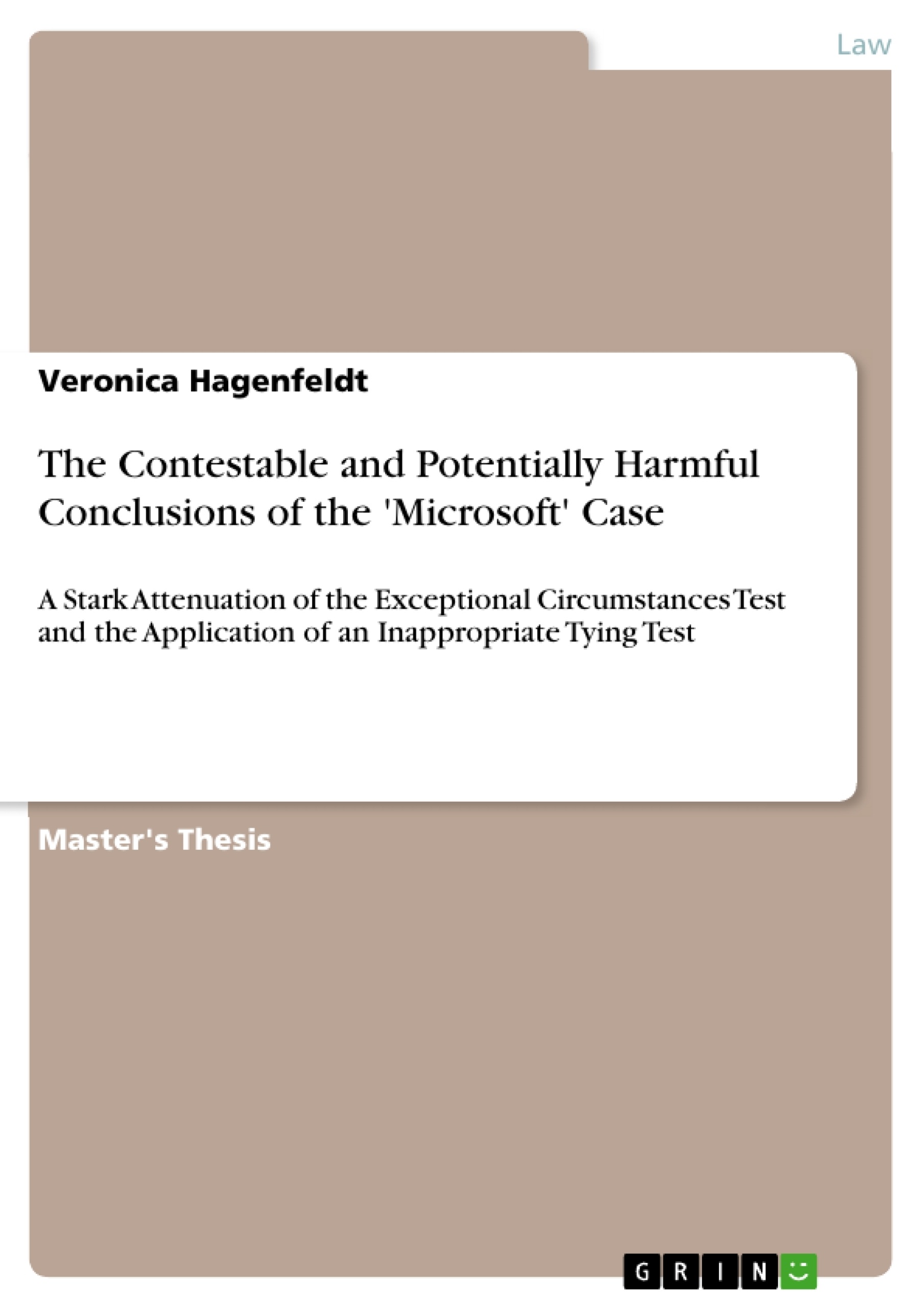In what has been described as the most important competition law case in EU history the CFI upheld the Commission’s finding that Microsoft was guilty of committing two infringements of EC competition law: illegitimately to have refused to supply intellectual property (IP) protected interoperability information to competing workgroup server operating systems (WGSOS), and to have performed an illegal tie of its Windows Media Player (WMP) to its dominant operating system. Microsoft has been labelled “the biggest encroachment on intellectual property in European competition law history” and it is accused of hampering innovation and interfering with beneficial product integration by applying an anachronistic form-based tying test. In the opinion of the author the Judgment is an esoteric masterpiece of obfuscation that despite its considerable volume does little to provide legal certainty regarding the conditions under which compulsory licensing of IP rights (IPRs) will occur, or when technical integration will be deemed legal. Microsoft is of ever-increasing relevance for legal academics and undertakings alike for several reasons: First, since it is the most high profile ruling on the two most controversial issues within EC competition law – compulsory licensing of IPRs and tying – the Judgment will be a fundamental point of reference, especially amid claims that competition authorities’ concerns regarding the acquisition and use of IPRs are increasing and that legitimate worries of IP owners (IPOs) are accordingly engendered. Second, high tech markets are increasingly important to consumers and to the global economy, and Microsoft is the “focal point for the ongoing debate about the future direction of the software business” because it concerns all dominant high tech undertakings. Third, Microsoft was concluded in the light of the Lisbon Agenda, where the EU officially acknowledged IP protection’s paramount importance in generating the innovation necessary for economic progress. The Lisbon Agenda has lead to clarion calls for the improvement of the IP environment in Europe, and for innovation considerations to take more prominent part in competition law analysis. Yet this dissertation shows that the opposite regrettably occurred in Microsoft, where IPRs were essentially deprived of their use as a result of an indefensible weakening of the exceptional circumstances test. [...]
Inhaltsverzeichnis (Table of Contents)
- INTRODUCTION
- Thesis, Aims and Outline
- PART ONE: Contextualisation of the Microsoft Judgment
- CHAPTER 1 – THE THEORY AND PRACTICE OF THE CONTROVERSIAL INTERFACE BETWEEN IPRS AND COMPETITION LAW, AND THE EXERCISE OF TYING
- 1.1. IPRs and Competition Law in Legal Theory
- 1.2. IPRs and Competition Law in Legal Practice
- 1.3. The Exercise of Tying in Theory and Practice
- PART TWO: The Controversial and Contestable Conclusions of the Microsoft Judgment
- CHAPTER 2 – A DRAMATIC ATTENUATION OF THE EXCEPTIONAL CIRCUMSTANCES CRITERIA
- 2.1. The Indispensability Criterion
- 2.2. The Elimination of Competition Criterion
- 2.3. The New Product Criterion
- 2.4. Chapter Conclusions and Implications
- CHAPTER 3 – THE APPLICATION OF A FLAWED AND INAPPROPRIATE FORM-BASED TYING TEST
- 3.1. The Separate Products Element
- 3.2. The Foreclosure Element
- 3.2. The Choice/Coercion Element
- 3.4. The Objective Justification Element
- 3.5. Chapter Conclusions and Implications
Zielsetzung und Themenschwerpunkte (Objectives and Key Themes)
The aim of this dissertation is to scrutinize the conclusions reached by the Court of First Instance (CFI) in the Microsoft case, arguing that they are highly contestable on both legal and factual grounds. The dissertation aims to demonstrate how these conclusions are likely to have significant ramifications for innovation and economic progress in Europe.
- The controversial interface between intellectual property rights (IPRs) and competition law.
- The application of the exceptional circumstances test in compulsory licensing cases.
- The appropriateness of the traditional form-based tying test in high-tech markets.
- The potential impact of the Microsoft case on innovation and consumer welfare.
- The need for a more nuanced and effects-based approach to competition law in high-tech industries.
Zusammenfassung der Kapitel (Chapter Summaries)
Chapter 1 sets the stage by exploring the theoretical and practical aspects of the intersection between IPRs and competition law. It highlights the fundamental importance of balancing these two bodies of law while ensuring the effective protection of IPRs. The chapter also examines the concept of tying and its application in the context of competition law.
Chapter 2 focuses on the Microsoft judgment, examining the Court’s controversial attenuation of the exceptional circumstances test. This chapter analyzes the application of each of the exceptional circumstances criteria in the context of Microsoft, arguing that the Court’s conclusions are highly debatable and likely to have detrimental effects on innovation incentives.
Chapter 3 delves into the application of the traditional form-based tying test in the Microsoft case. The chapter argues that the test is inappropriate in the context of high-tech markets and that the Court’s conclusions are legally and factually contestable. It also highlights the potential for such an approach to stifle innovation by wrongfully condemning beneficial technical integration as abusive.
Schlüsselwörter (Keywords)
This dissertation focuses on the contentious interplay between intellectual property rights and competition law in the context of high-tech markets. The analysis centers on the Microsoft case, examining the Court’s application of the exceptional circumstances test for compulsory licensing and its use of the form-based tying test. The key themes explored include the potential ramifications for innovation, consumer welfare, and the overall European economy.
- Quote paper
- Veronica Hagenfeldt (Author), 2009, The Contestable and Potentially Harmful Conclusions of the 'Microsoft' Case, Munich, GRIN Verlag, https://www.grin.com/document/169615



